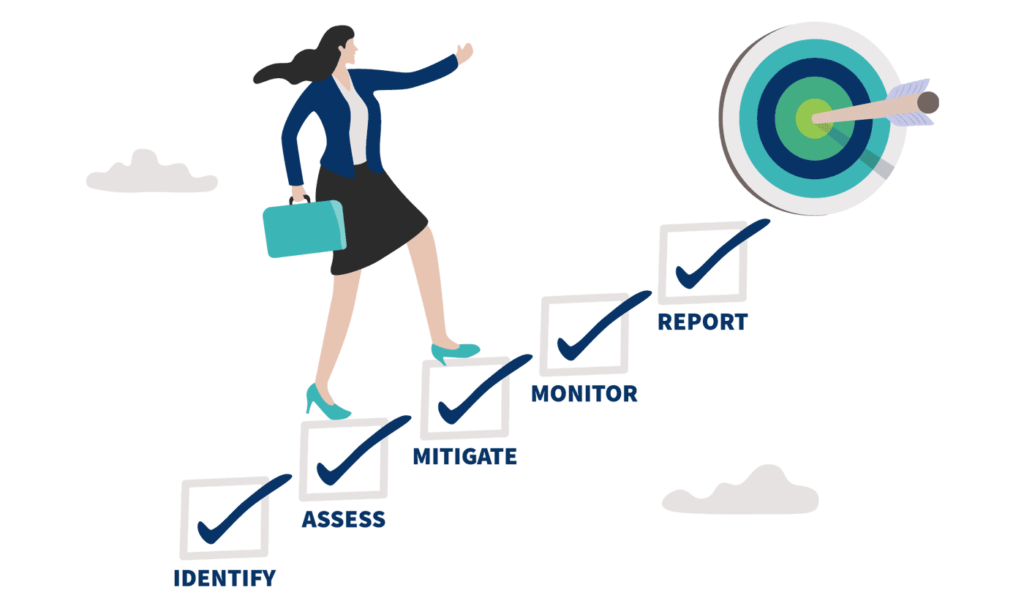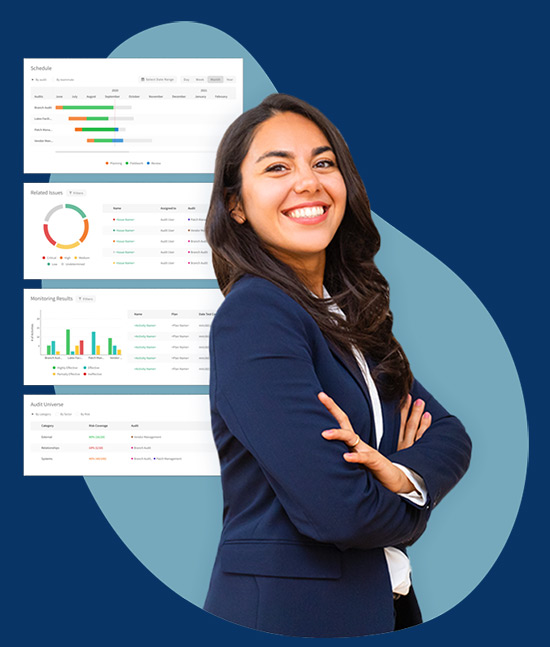ERM vs GRC Software
If you are looking for a governance, risk, and compliance solution, you might be frustrated by the limitations and challenges of GRC software. GRC software can fail to provide a clear vision for your risk management and governance program, struggle to communicate the value and benefits of your program to your stakeholders, and rely on manual, outdated processes.
That’s why we recommend Enterprise Risk Management as the better approach. Unlike GRC software, we take ERM seriously. LogicManager’s flexible and intuitive ERM software includes a comprehensive matrix of solutions that accelerate and amplify your risk management efforts to provide prioritization, business insights, and engagement with your stakeholders. Regardless of your role or responsibilities or how you structure your risk management and governance program, we have you covered.
Request a demo to discover why LogicManager’s ERM software is the best choice for your governance, risk, and compliance needs.
Typical GRC Platform
LogicManager (ERM)
Take a Risk-Based Approach to GRC
LogicManager ERM Software is not just another GRC tool, but a comprehensive and holistic approach that connects the dots between your GRC functions and your enterprise risk profile. ERM works because risk is the underlying link between GRC functions. If we recognize that each silo’s function – regardless of whether its labeled risk, compliance, or governance – is actually working to mitigate a subset of the organization’s enterprise risk, we suddenly begin to see commonalities and realize efficiency that results in bottom-line value. LogicManager helps you to create a risk-based culture that fosters collaboration, transparency, and accountability.

- Identify the most critical risks and opportunities across your organization, using our centralized risk library and readiness assessments.
- Assess the likelihood and impact of each risk and opportunity, using our customizable risk assessments and templates.
- Mitigate the risks and leverage the opportunities, using our best practice controls and policy automation.
- Monitor the performance and effectiveness of your risk management and compliance program, using our testing, KRI/KPI, and policy portal features.
- Report the results and insights of your risk management and compliance program, using our audit trail, reports, and Insight Workbenches.
ERM Solutions to Bridge Your Risk Journey Across Silos
Your risks are all interconnected. Our governance area and point solution packages are built on a taxonomy platform, so they can be easily integrated into any department and support you throughout the entirety of your organization’s risk journey.
The LogicManager Difference
We take the risk so you do not have to. We evaluate each solution’s effectiveness to ensure your success and hold ourselves accountable with an unconditional money-back guarantee. We are dedicated to evolving with you as your needs expand.
Our fixed pricing model offers unlimited licensing and everything you need to succeed in risk management. With no surprise fees, our no-code technology allows for easy configuration and we provide additional support from our advisory team at no extra cost.
We’re not just a software provider, but your trusted partner in enterprise risk management. From one-on-one training sessions to answering technical and best-practice questions, our dedicated advisory analysts are with you every step of the way.
Frequently Asked Questions About GRC Software

Request a Demo of LogicManager ERM SoftwareDon’t settle for a siloed and fragmented GRC software solution
Speak with one of our risk specialists today and discover how you can empower your organization to uphold their reputation, anticipate what’s ahead, and improve business performance through strong governance.

